Dishonored Preview: The Ways of System Shock and Thief Return
Through the Looking Glass.
The Cat House is a high class brothel, a dramatic white building sat far above the city of Dunwall's harbour. Your mark is a regular customer, and he's currently cavorting with a masked lady of the night in its lavish penthouse - you, meanwhile, are crouching unseen on a window sill, peering through ornamental glass.
What next? Well, I guess you could stab him or shoot him. If you don't mind making a mess you could also pause time and hang five separate crossbow bolts in front of his face. That way once normal temporal service resumes he'll be very dead indeed.
Alternatively, you could get creative. Why not leap into control of his body and steer him towards the white marble balcony that overlooks harbour? Then simply jump backwards out of his body and, while he retches up his guts in panic and confusion, spend a little more magical Essence on a Windblast. As he ragdolls into the wild blue yonder it'll feel like the perfect crime, if it weren't for the dainty witness screaming behind you.
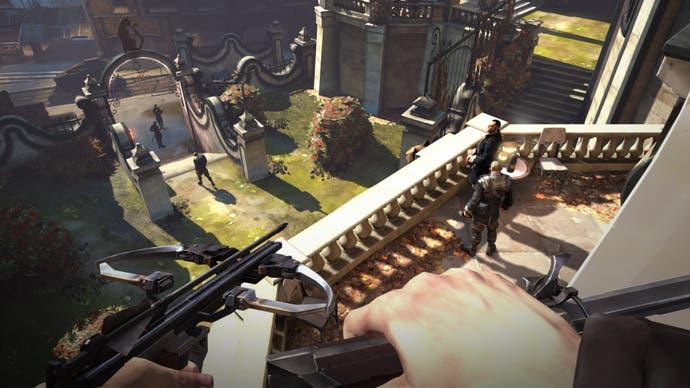
Dishonored is a game about systems, choices and unique pathways. The first time you see it in action your mind hurtles through a constant stream of comparisons. Deus Ex comes first, then Hitman, Thief, Vampire: The Masquerade - Bloodlines, BioShock and even - at a point at which the hero occupies the body and soul of an ornamental fish - Disney's Sword in the Stone.
It's fine and dandy playing 'spot the JC Denton' in Dishonored; design lead Harvey Smith was after all the Lead Designer on the big DX. It's also inevitable that you'll see echoes of City 17 in the decrepit city of Dunwall - after all both these hellholes have a common artistic creator in Victor Antonov. Such an approach, however, does the game itself a massive disservice. Dishonored is its own game, and potentially a fantastic one at that.
You play as Corvo, formerly the bodyguard to the Empress and now falsely accused of her murder. After a spell languishing in prison the appearance of someone ominously known as The Outsider has broken up Corvo's routine, granting him magical powers, a scary mask and a tattoo of ownership burnt onto his arm.
He's now out to wreak vengeance on the corrupt officials who framed him, but his mysterious benefactor clearly has his own intentions. After all, anyone who grants a complete stranger the ability to summon swarms of hungry plague rats can't be entirely trustworthy.
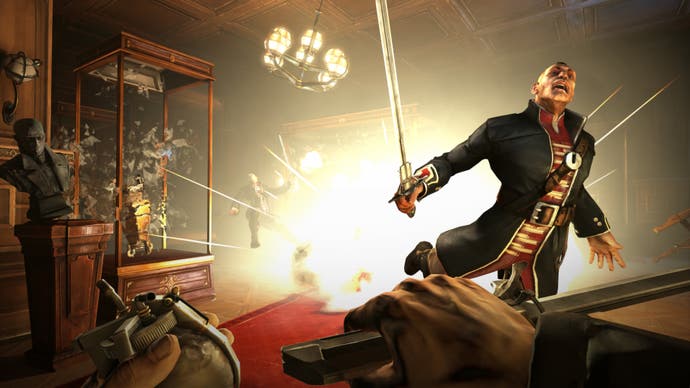
Outside, the city of Dunwall looks a triumph. Its stylistic roots are in the architecture of England and Scotland - indeed, in its earliest stages of development Dishonored was to be set in seventeenth century London. Arkane's research trips haven't just been on the spires, archways and high-vaulted ceilings of London and Edinburgh though. They've also been on their residents.
American accents may abound throughout the game, but Arkane has an anatomy expert on-staff to ensure that the morphology of the game's faces is that of the Great British. During the recent gameplay demonstration (before this fact had been revealed) I'd noted an NPC that I thought looked a lot like Trigger from Only Fools and Horses. Then, as the game continued, it became ever more apparent that the whorehouse guards all looked a bit like Millwall away supporters. Arkane's surreptitious photographs of London bouncers have not been in vain.
Threaded through all this, of course, is that rich vein of steampunk: this is a world infected by magic and running on whale oil. Vehicles are genuinely horseless carriages - vast iron wheels coupled to Victoriana suspension clatter on rails, while respectable citizens leer out behind the jet-black arched windows. Over this scene loudspeakers bark out prerecorded curfew messages, and warn citizens to report any signs of plague that they see in their neighbours. The infected are known as Weepers, lost souls who cry blood and have a tendency to attack their fellow man.
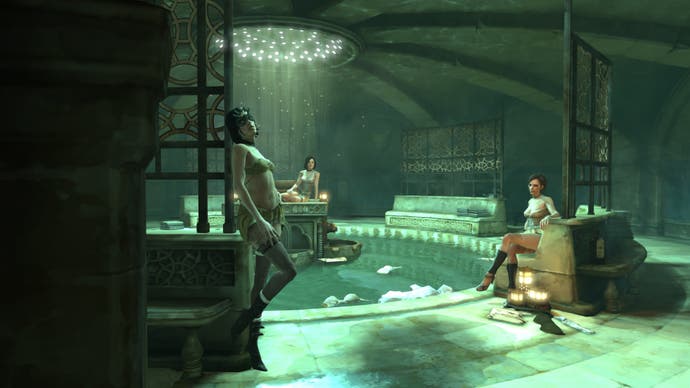
Through all this chaos, then, Tallboys are required to keep the peace, as well as the poor in their place. You won't have seen anything on stilts that's quite so scary - they're heavily armoured officers on goliath walking frames with shields that open whenever they want to break out some law and order with a savage shot from their electro-bow. Behind them, meanwhile, Walls of Light separate districts - barriers which frazzle the bodies of those who aren't permitted to pass. In summary Dunwall will be nice to visit, but you sure as hell wouldn't want to live there.
Let's return, though, to the more civilized confines of the Golden Cat. Corvo's missions don't take place in open-world hubs, but instead more hand-crafted levels. Each has multiple entrances and pathways through it, and it's rare that they'll fall back on the Deus Ex (and Deus Ex: Human Revolution) fascination with unlikely air vents. As such, if you're taking the stealthy route then the Cat is full of rafters to creep along, windows to weave in and out of, sinks to skulk behind and elegantly decorated panels for you to use your 'blink' transport ability to zip yourself through. Brilliantly, meanwhile, you can blow out candles while you caper through your silk and satin surroundings, leaving a shroud of darkness wherever you go.
The activity within the house of ill repute, meanwhile, isn't a simple case of guards patrolling this way and that. If left undisturbed narratives will play out that make these locations feel real and vibrant. Take for example the arrival of the Pendletons - the pair of corrupt officials that you need to scrub from the record.
Backstage in their grubby changing rooms ladies get themselves ready and can be heard bemoaning the imminent arrival of these unsavoury customers, the nicest thing they say being that they're more or less 'clean'. Then they move out into the Cat's flowery main hall where the impatient Madam harries them, and another girl attempts to rouse a slumbering guard. Elsewhere in the building, meanwhile, the Pendletons - one rather lovesick- make their grand arrival.
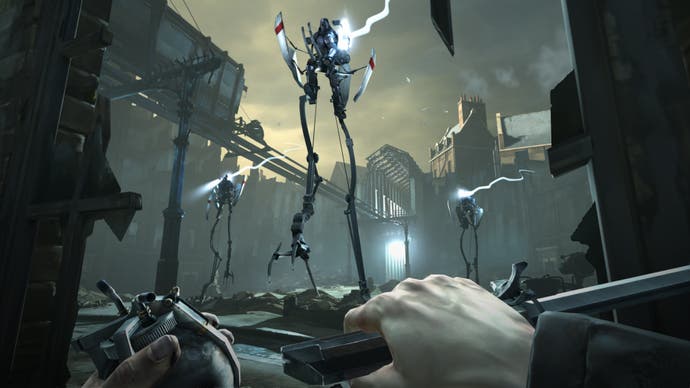
These scenes and their realistic flow, whatever angle you enter proceedings from, are fascinating - and something of a joy to witness in a time when a game like Hitman: Absolution appears to be straying from its roots. You can always take the direct route with the Pendletons and their entourage - delivering crossbow bolts to the face and downward knife stabs from the rafters.
Alternatively, however, you can be creative with the scenery to make your actions look like accidents - one of them quite fancies a dabble in the steam room, for instance, so locating the right pressure wheel could result in a tragic fatal scalding. The bigger the blood trail you leave and the more innocents caught in the crossfire, the more your story will subtly change in tone as the world gets even darker, and the conversations of those with murdered loved ones come back to haunt you.
Dishonored, much like BioShock Infinite, is an elegant game for a more civilized age. It proudly stands out from the 2012 sequel conveyor belt, and if it fulfils its potential could be a defining game of this generation. That said, it comes from a publisher and a developer for whom troubled releases are hardly a stranger - and one would hope that all involved recognise the importance of keeping Dishonored in the development oven until it's good and ready. It appears that the old ways, the ways of Deus Ex, System Shock and Thief, are very much back in the mainstream. The only remaining question is why they ever went away in the first place.



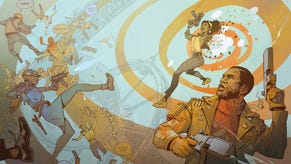
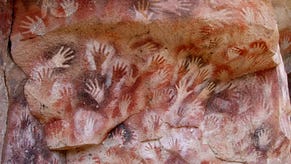
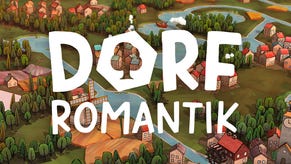


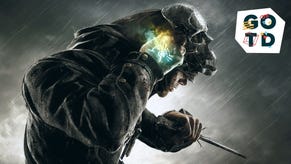




.png?width=291&height=164&fit=crop&quality=80&format=jpg&auto=webp)



